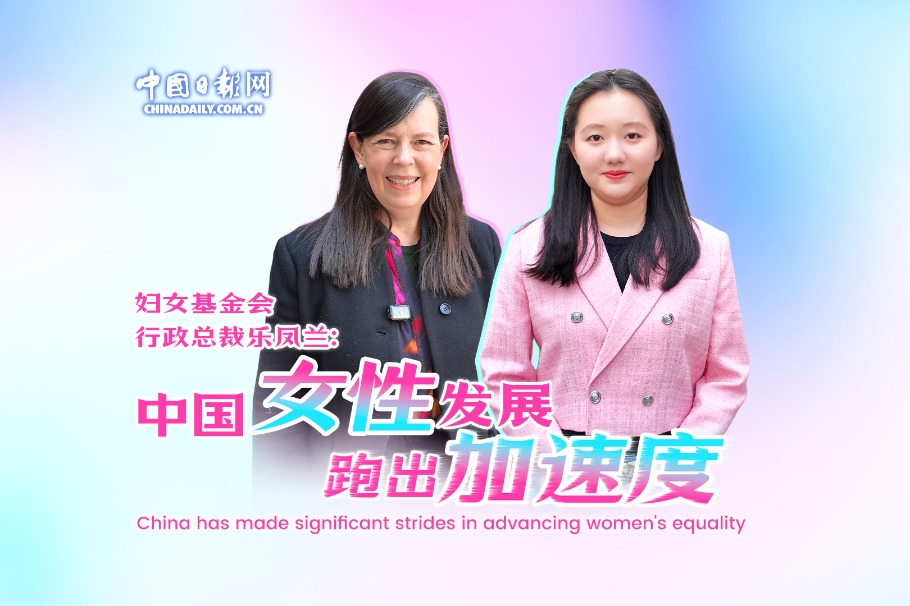Raising the bar


China's higher-level opening-up will receive a huge boost from the implementation of the RCEP agreement
The Secretariat of the Association of Southeast Asian Nations, the official depository for the Regional Comprehensive Economic Partnership, recently announced that six ASEAN member countries-Brunei, Cambodia, Laos, Singapore, Thailand and Vietnam-and another four countries, China, Japan, New Zealand and Australia, had formally submitted their RCEP ratification, meeting the conditions for the deal to enter into force in those 10 countries at the start of next year. The other five RCEP signatory countries are expected to complete relevant procedures in succession, paving the way for full implementation of the deal.
Under the RCEP pact, China and Japan will, for the first time, have a free trade arrangement. For instance, the tariffs on some Chinese imports from Japan, such as loudspeaker boxes, will be immediately lowered from 10 percent to zero in the first year. While the tariffs on some other imported products, such as electric ovens, induction cooktops and electric rice cookers, will be gradually lowered from 15 percent to zero over a period of 10 years. Such opening-up measures will not only bolster China-Japan economic and trade ties, but also facilitate the negotiations on a China-Japan-Republic of Korea free trade agreement.
In terms of rules of origin, the RCEP uses the principle of regional accumulation, which allows the value content of a product's origin to accumulate within the 15-member region, and the value content from any of the RCEP parties will be factored in, which will significantly increase the utilization of the agreement's preferential tariff rates. This will give multinational companies wider access to RCEP preferential tariffs and the RCEP countries will be more inclined to strengthen value chain cooperation and have more industrial layouts within the trading bloc to gain zero-tariff treatment. It will not only boost intra-RCEP trade, but also greatly deepen the integration and development of the regional supply and value chains.
When in force, the RCEP will be the world's largest free trade agreement, covering a total population four times that of the Comprehensive and Progressive Agreement for Trans-Pacific Partnership and a total GDP nearly twice that of the CPTPP. Among the RCEP member countries, China is the largest economy, accounting for around 58 percent of the total. The implementation of the RCEP agreement will effectively consolidate the China-centric regional value chain, making it more efficient and stable. The RCEP trading bloc will continue to be the world's fastest-growing region, accelerating the shift of the world's economic center of gravity to the East and boosting global economic recovery in the post-pandemic era.
China's strategy to expand its free trade area network has become a major driver for pushing forward higher-level institutional opening-up.
The RCEP is the first free trade area with global influence in which China has participated in the construction process, making it a milestone in the implementation of China's free trade expansion strategy. The RCEP rules are both high-standard and inclusive, taking into consideration the varied demands of regional countries that are in different development stages.
The RCEP agreement will also be constantly upgraded. For instance, according to the agreement, after the RCEP has been in effect for a certain period, regional countries could make higher-level arrangements on rules of origin and the negative list, among other things. The number of RCEP members is also likely to further increase. The current 15 member countries welcome India, which participated in the negotiations, to join the ranks at any time. Moreover, 18 months after the pact comes into effect, any country or separate customs territory can apply to join.
In addition to the readiness to fully implement the RCEP agreement, China has formally applied to join the CPTPP and the Digital Economy Partnership Agreement. It's safe to say that the implementation of the RCEP will lay a solid foundation for China to take part in higher-level economic and trade agreements in the years to come.
Under the RCEP deal, China has for the first time pledged to the outside world a negative list for investment. Although negotiations on the negative list for services trade and services investment are yet to be completed within six years following the implementation of the RCEP agreement, negotiations on the negative list for non-services investment have been completed. Compared with China's existing negative list for foreign investment, the negative list pledged in the RCEP agreement is designed to maintain openness and fairness in a broader policy area, especially for behind-border policy issues (which refers to non-tariff measures that operate inside countries rather than at the border). This will further promote reform and opening-up.
The signing of the RCEP agreement and China's application to join the CPTPP boast far-reaching significance for the overall picture of China's reform and opening-up. The free trade agreements that China is currently implementing are about to be upgraded and some of the problems regarding WTO reforms are likely to be solved at an accelerated pace. Against such a backdrop, it is necessary for China to implement higher-standard international rules on trade and investment.
Both the RCEP and the CPTPP involve all sorts of policies on international trade and investment. Some of the obligations are non-compulsory and some are worthy of trials and experiments in China's free trade zones and port. The implementation of the free trade expansion strategy will help China dovetail its domestic rules with higher-standard international economic and trade rules, pushing forward institutional opening-up of the country.
The RCEP is a milestone for China in implementing its free trade expansion strategy. As the application process for higher-standard agreements such as the CPTPP and DEPA advances, China will push forward higher-level opening-up. Businesses should conform to the trend of the times. After all, a more open domestic market and international market is conducive to the development of innovative companies.
The Chinese government, on its part, needs to strengthen its supervision and provide relevant services. From the implementation of cross-border data flows to further opening-up of cross-border services trade, the more open a country is, the more necessary it is for the country to coordinate security and development and prevent risks of all sorts.
The author is a professor in international trade in the School of International Trade and Economics at the University of International Business and Economics. The author contributed this article to China Watch, a think tank powered by China Daily. The views do not necessarily reflect those of China Daily.


































